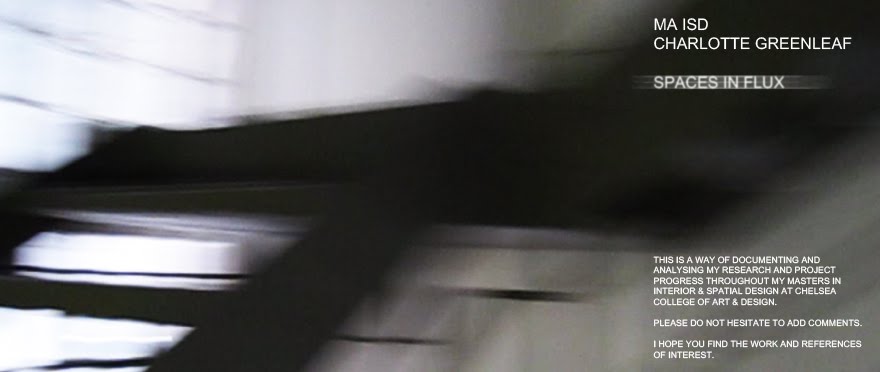Which would flow from the wall or ceiling down to the ground, there would be parts of the sculpture which would be very still and parts which would be full of movement and flow. This would allow gravity to play a part.
The sculpture would be made from plastic or folded paper.
There is the possibility of the idea that when you move around the sculpture, its appearance changes from stillness to movement.
Perhaps part of sculpture reveals something underneath.
Do I take a journey and perhaps map that out in the sculpture.
The subsequent sketch models I made in trying to work out elements of the sculpture.
Infact some of these I felt were stronger in their own right and would just be confused within a large sculpture of lots of different elements.

 The model above is supposed to embody this idea of stillness (the space at the centre of the wave) and movement (the flowing free strips surrounding).
The model above is supposed to embody this idea of stillness (the space at the centre of the wave) and movement (the flowing free strips surrounding).
This model was concerned with the idea of moving around a sculpture and as you do so, it would change from encompassing movement to that of stillness.
It is made up of a number of plastic strips, which gradually appear to twist as you view around the object.
The twisting elements show flow, movement and an element of chaos, whilst the straight elements are still, ordered and static.
I panned around the model and joined the images together to create an image of stillness flowing into movement.
3.

This model was also concerned with the idea of moving along a sculpture and as you do so, it would change.
The idea is a static fixed screen which has twisted strips cut into it, as your vision pans along the screen, the screen evolves and flows. Opening and closing up, revealing and obscurring.
This screen was fixed to a foam core board and I believe would be more effective if you could see through it from both sides, so that it reveals and obscures what is actually going on in the space around it.
I experimented with cutting the strips to altering thicknesses as the plastic is limited by how much it can twist before buckling or splitting. The shorter strips need to be thinner, where as the longer strips can be thicker.
I have decided that for my final piece for the crit I shall develop another twisted screen at a large scale which the viewer can therefore walk around.
I have considered either printing two juxtaposing images on either side of the screen
or
Printing two images and mounting them onto opposite walls of the room, which are therefore viewed through the screen
or
Projecting onto the screen


No comments:
Post a Comment